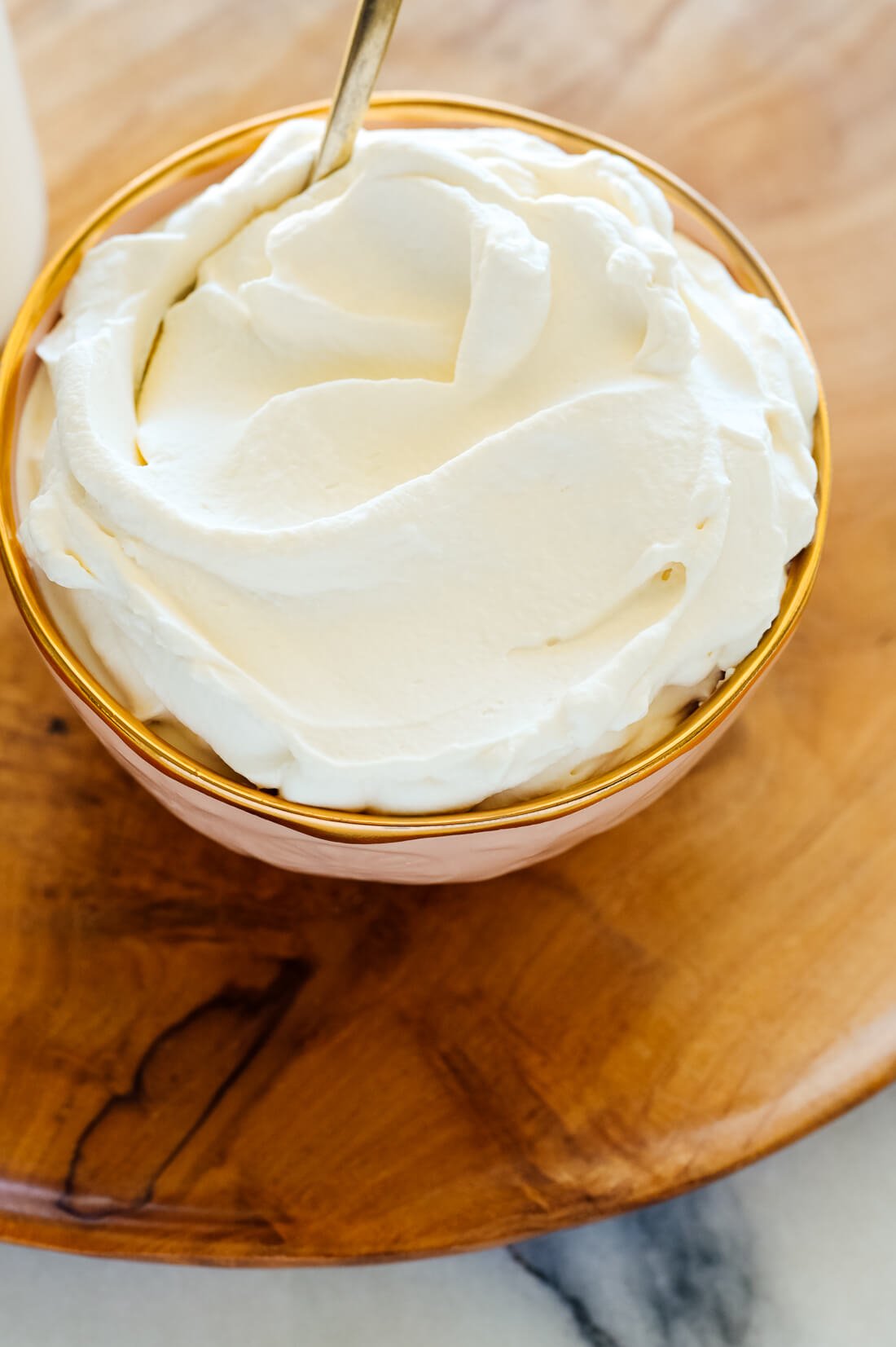103 Comments
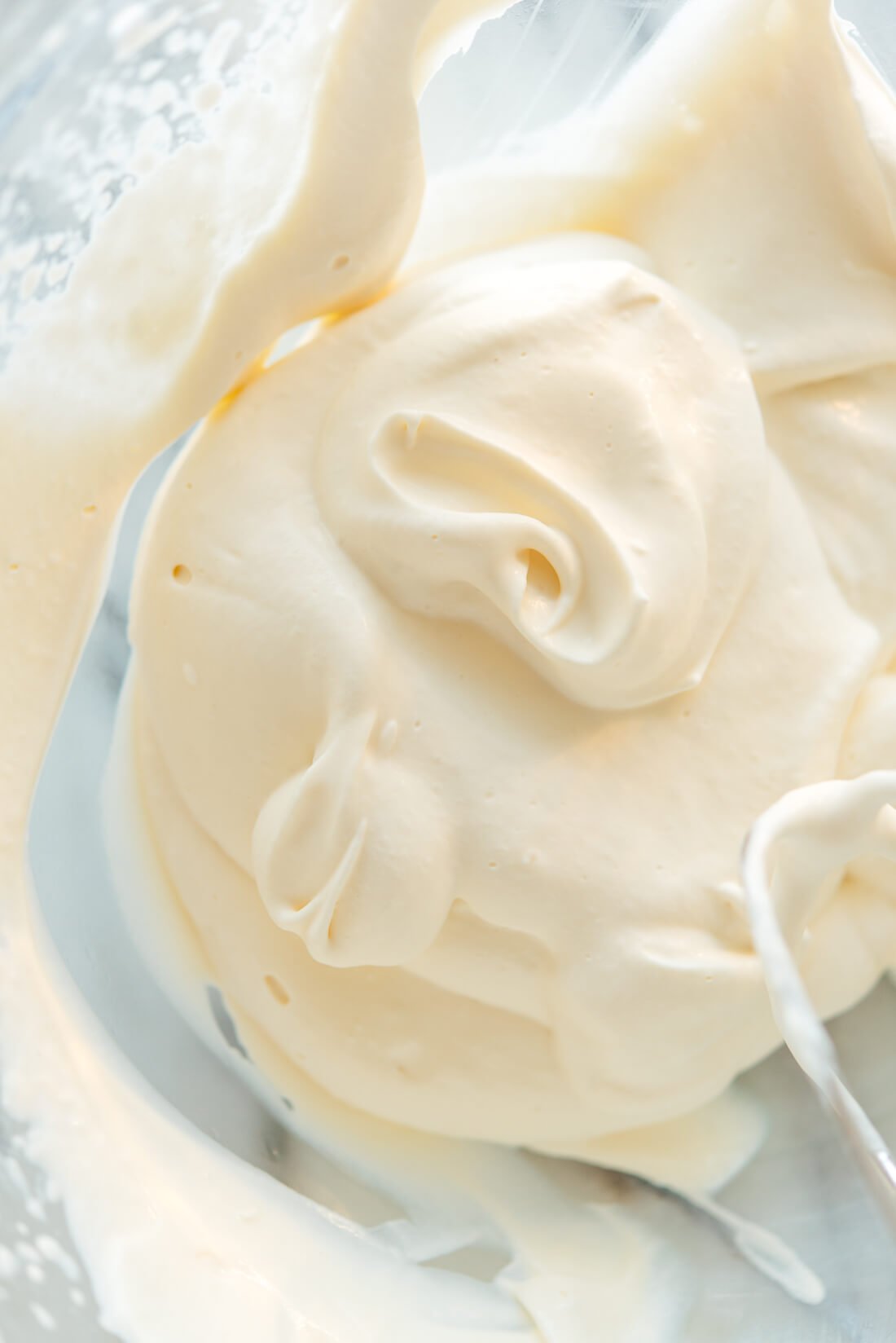
Have you tasted real whipped cream? I sure hope so. It puts Cool Whip and the canned stuff to shame.
Homemade whipped cream is ultra luxurious, decadent, and as delicious as the best vanilla ice cream. Real whipped cream doesn’t have any strange preservatives or additives, either.
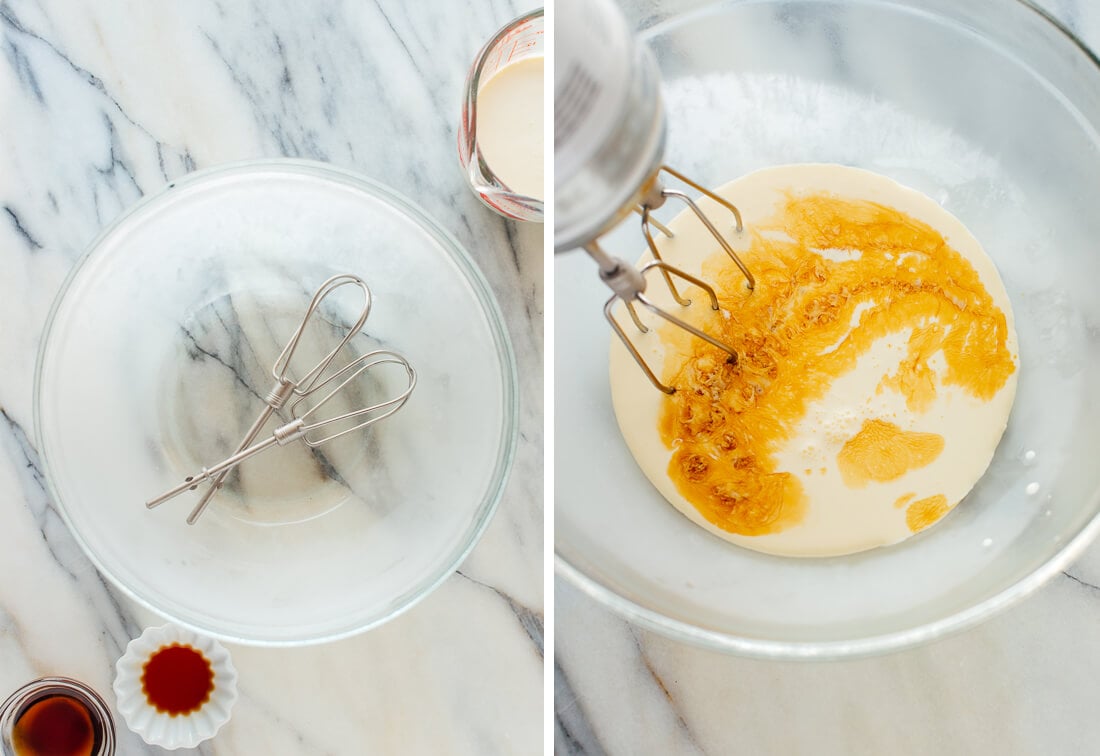
Whipped cream is the perfect creamy topper for desserts and hot drinks. Since the holidays are here, I thought I’d share a tutorial with everything you need to know about making whipped cream.
If you’ve never made whipped cream before, it may seem a little intimidating at first. I promise, it’s so easy to make. You can make whipped cream in under 10 minutes!
Watch How to Make Whipped Cream
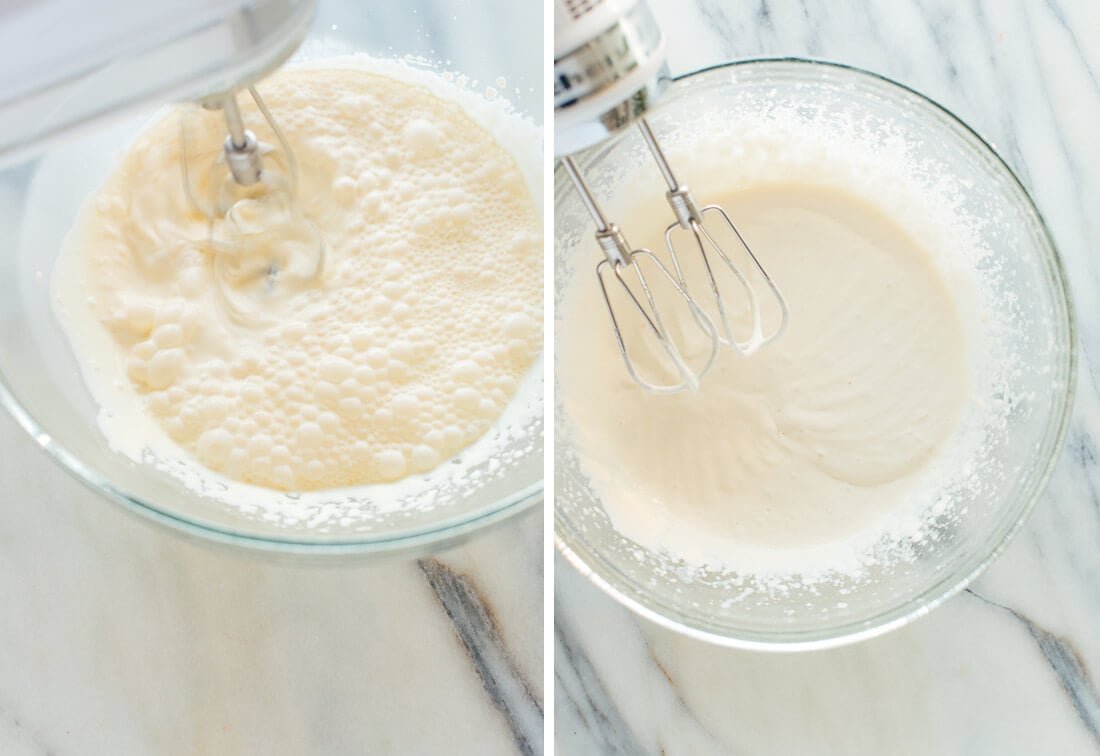
Whipped Cream Tips
Whipped cream is truly so easy to make. Here are a few tips before you get started:
- Whipped cream doubles in size. Meaning, if you use 1 cup heavy cream, you’ll end up with about 2 cups whipped cream. You can divide or multiply the amount of heavy cream to get your desired quantity of whipped cream (making extra is never a bad idea).
- Equipment options: I love using my hand mixer (affiliate link) to make whipped cream because I hate lugging out my heavy stand mixer. You can also use an immersion blender or whip it together by hand, if you’re patient (Bon Appetit has a video for that).
- Start chilled. At minimum, your heavy cream needs to be chilled. The whipped cream will whip up faster if your bowl and beaters are chilled as well. Use a tempered glass bowl (think Pyrex) or stainless steel bowl so it retains the cold temperature (plastic bowls will not).
- If you’re in a hurry, use a hand mixer or immersion blender. Choose a sturdy bowl with a smaller base and tall sides (a 4-cup liquid measuring cup is perfect) and chill it for 15 minutes in the freezer. That way, the blender is agitating more of the cream at once, and the cold walls help it whip up even faster.
- The only ingredient you really need is heavy whipping cream. To make it taste like the whipped cream you know and love, I recommend adding a tiny bit of sweetener and vanilla.
- Traditional recipe typically call for powdered sugar, but I like to use maple syrup or honey because they add a subtle hint of extra-delicious flavor. I like to use high-quality organic cream because I’m convinced it produces a more tasty end result.
- Pay attention. When you first start blending the mixture, it might not seem like you’re doing much. Then the whipped cream will start progressing from soft peaks to medium to stiff peaks fairly quickly. You’ll learn more about the differences between those textures below.
Uses for Whipped Cream
Here are a few recipes that would benefit from a dollop or two:
- Pies and tarts: Such as my pecan pie and apple tart.
- Fruity crisps: So many options! Apple crisp, peach crisp, blueberry crisp, strawberry rhubarb crisp and plum crisp.
- Cakes without frosting: Such as almond cake and olive oil cake.
- Coffee drinks: Think Irish coffee or your usual morning coffee.
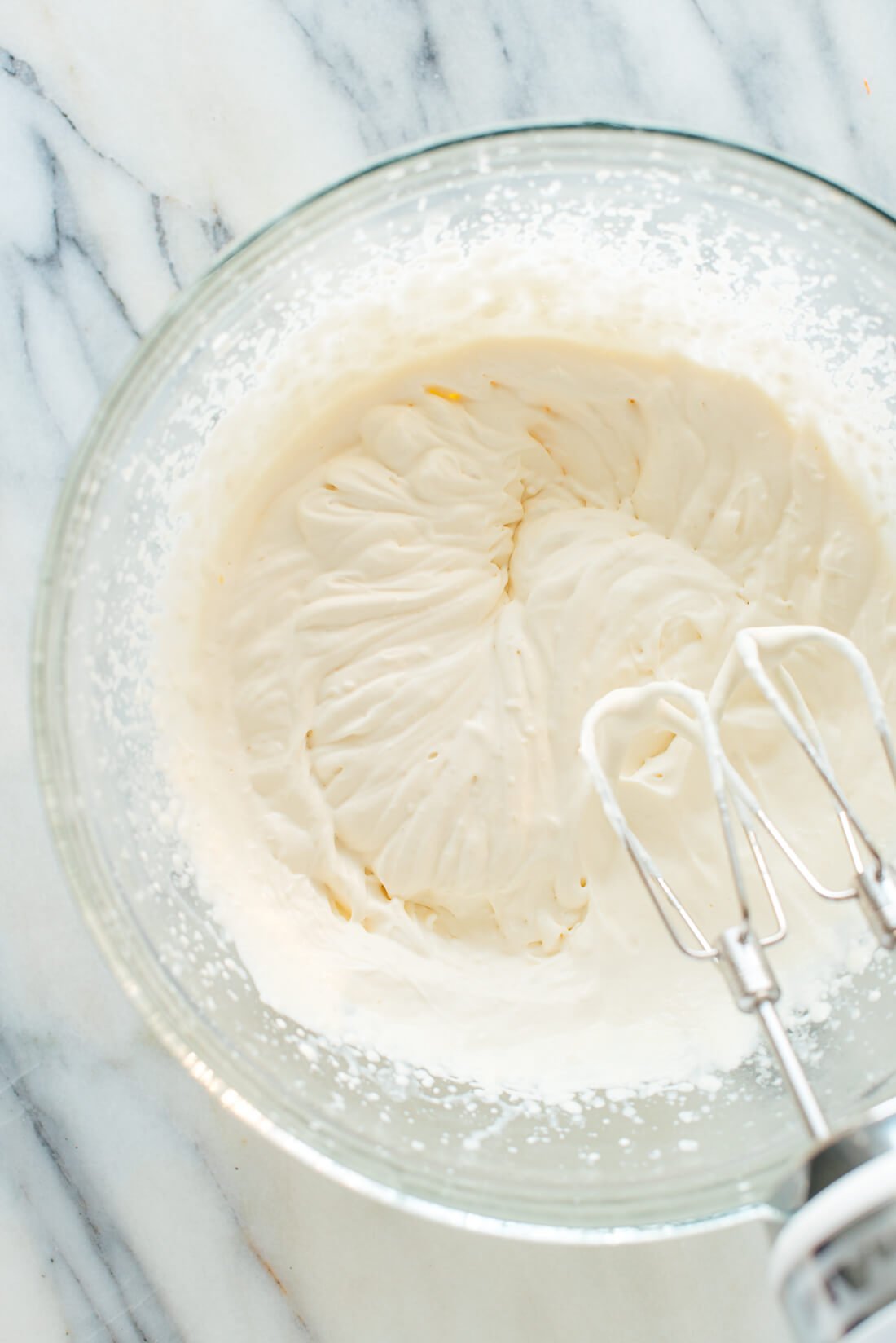
Soft Peaks
Soft peaks are like semi-melted ice cream. At this stage, the whipped cream is floppy but has an ultra luxurious texture. Soft peaks are perfect for folding into desserts or floating on top of Irish coffee.
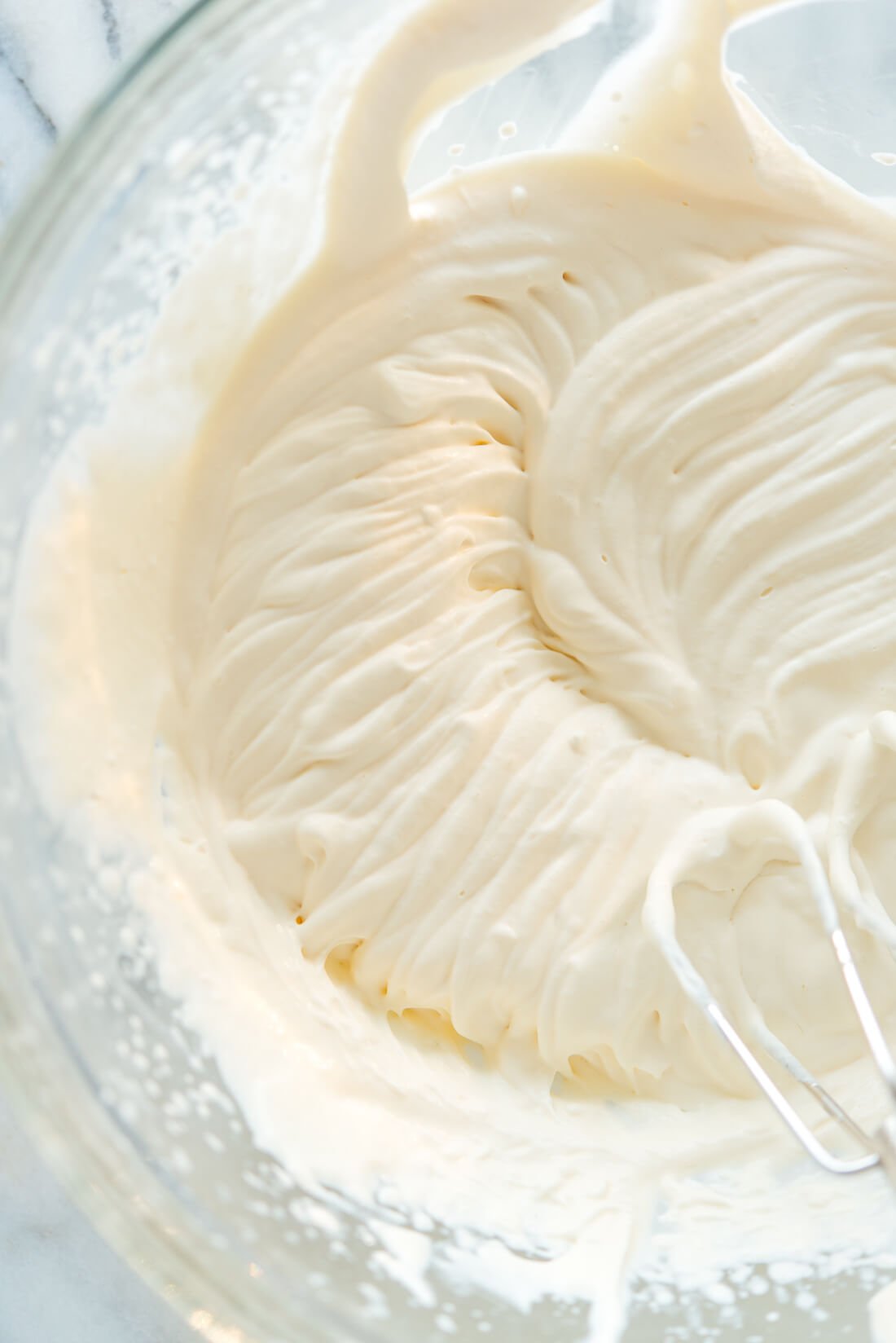
Medium Peaks
Imagine a slice of classic pumpkin pie dolloped with homemade whipped cream—that’s what medium peaks look like. At this stage, the whipped cream will have more significant swirl marks and a more stable structure.
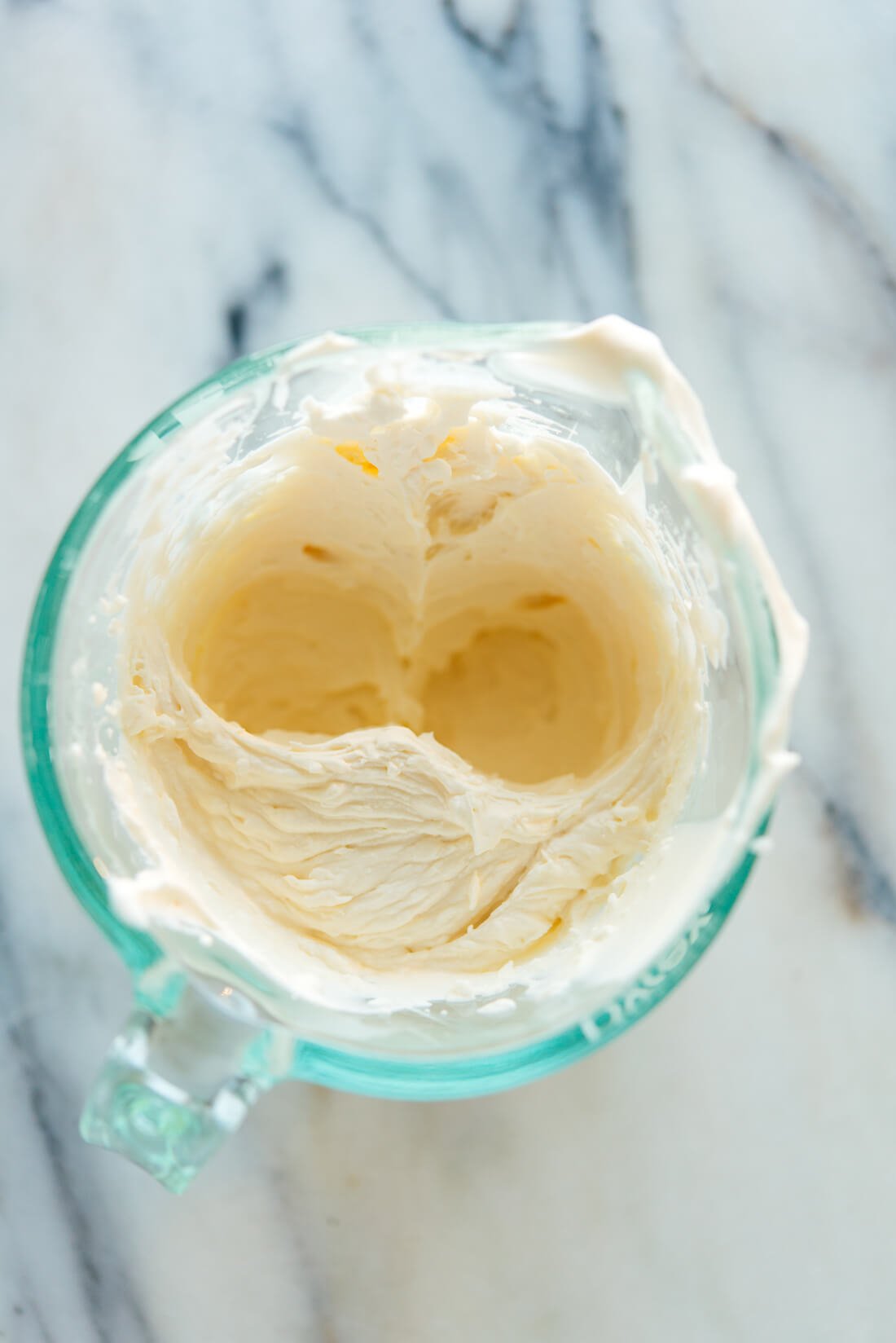
Stiff Peaks
Also known as firm peaks, stiff peaks have an intensely rippled texture when you lift the beaters. Stiff peaks aren’t quite as luxurious and decadent as the former two, but you could ice a cake with this texture.
Once your mixture reaches stiff peaks, stop blending! You’ll see what happens if you blend too long below.
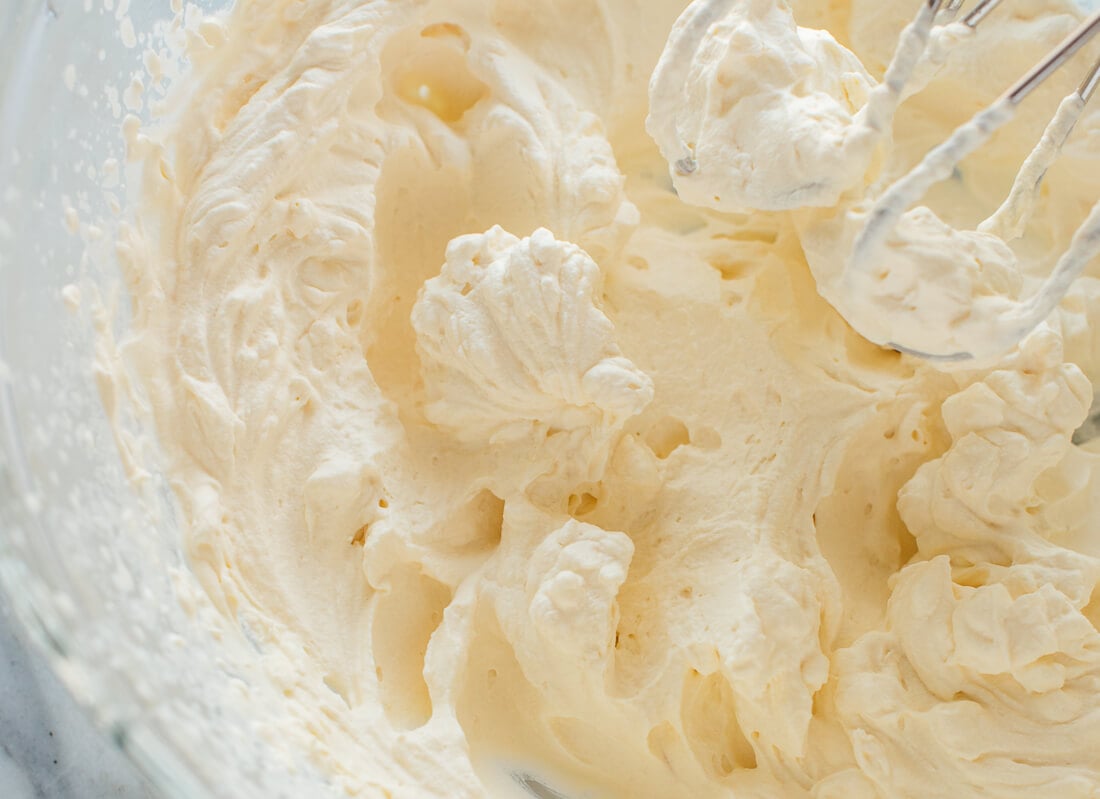
When You’ve Whipped Too Long
At this point, the mixture is grainy and losing volume. It’s literally falling apart—the fats and liquids are separating into butter and buttermilk, respectively.
How to fix it: Depending on how over-whipped the mixture is, you might be able to save it by letting the mixture chill out in the refrigerator for 30 minutes to 1 hour and then stirring with a spatula to combine. For a more immediate fix, you can try stirring in a few tablespoons more heavy cream with a spatula. If those don’t work, you might as well turn the mixture into butter!
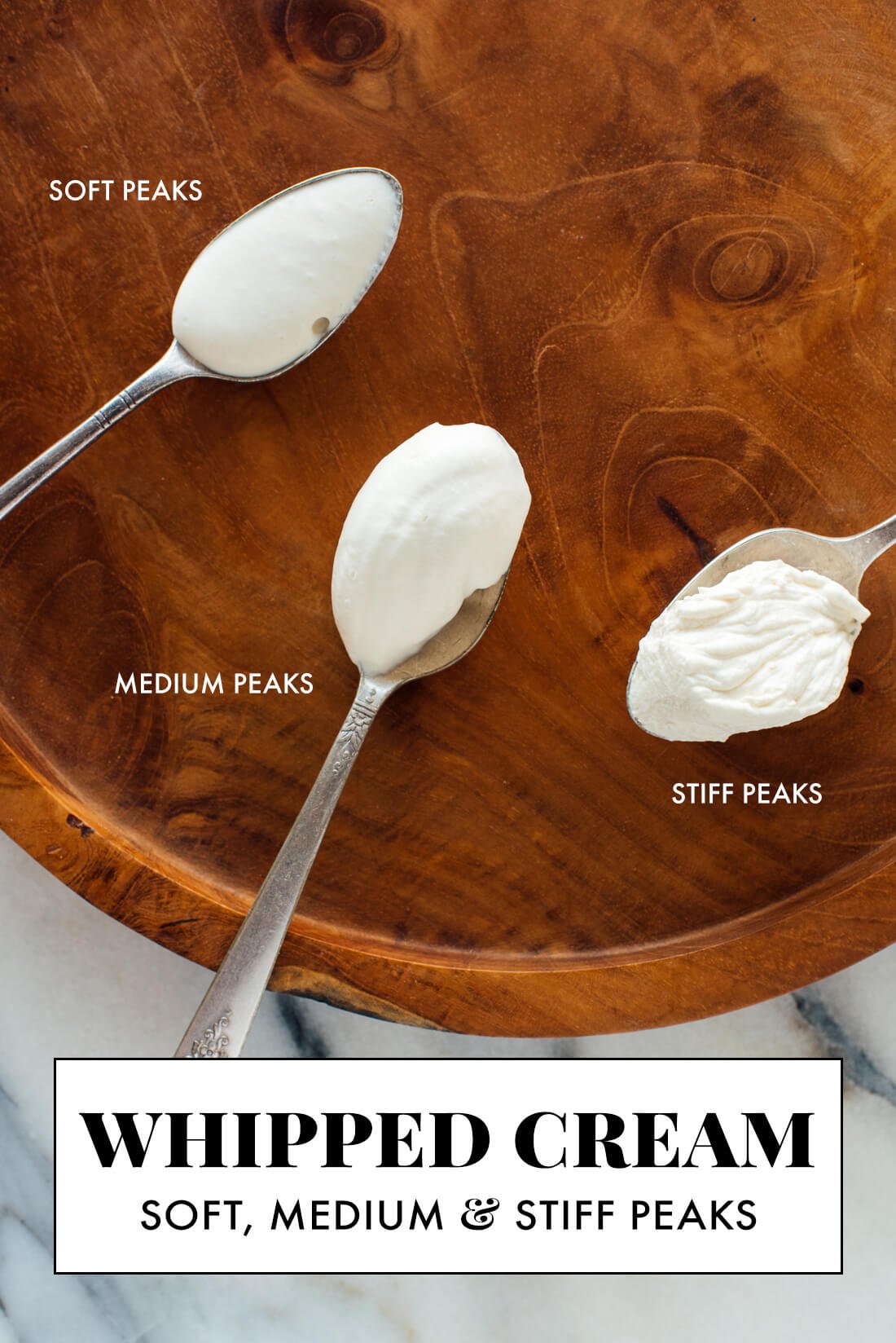
Here, you can see examples of soft, medium and stiff peaks side by side. I hope it’s helpful!
Please let me know how your whipped cream turns out in the comments. I’d love to hear how you use it.
